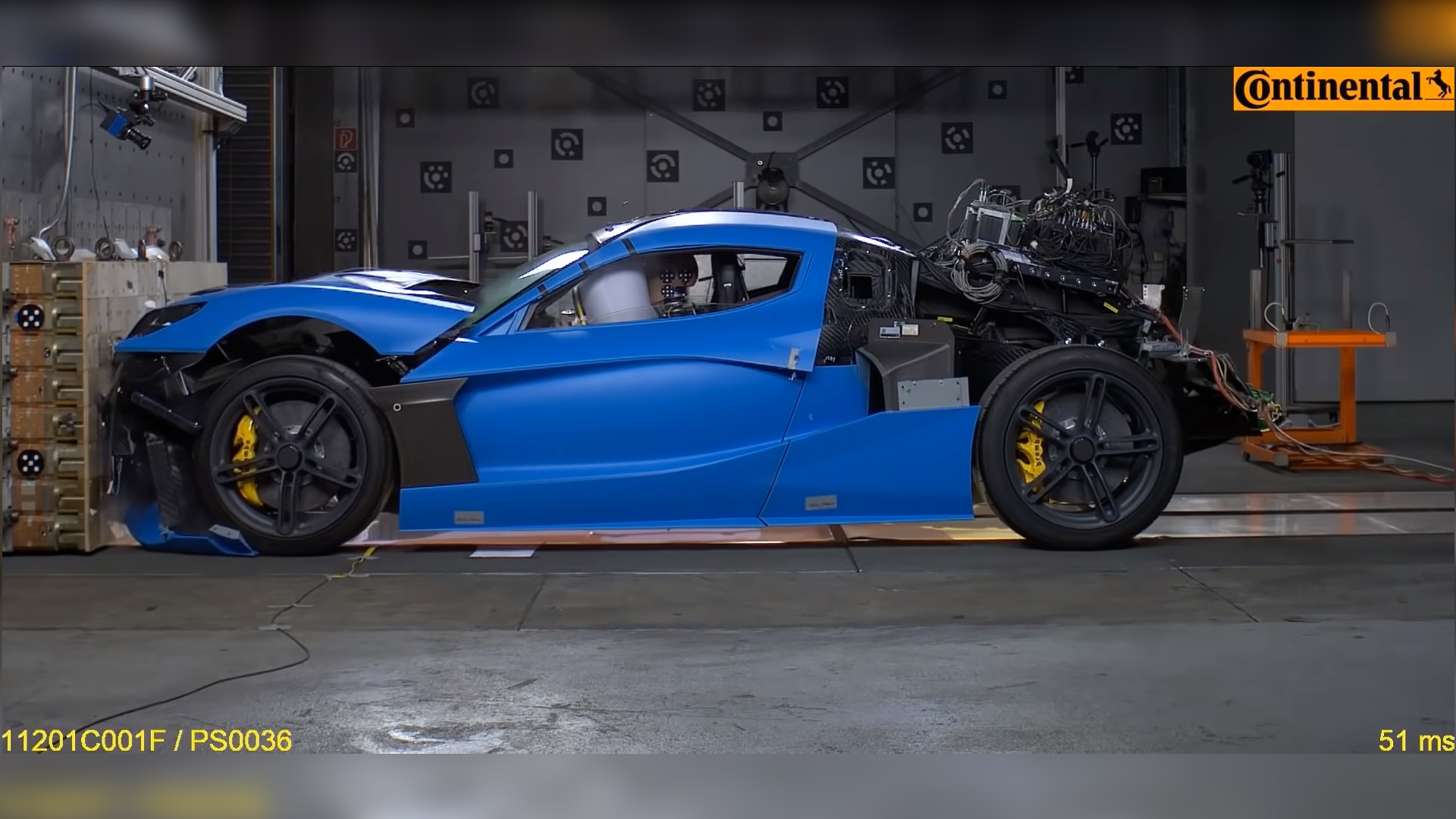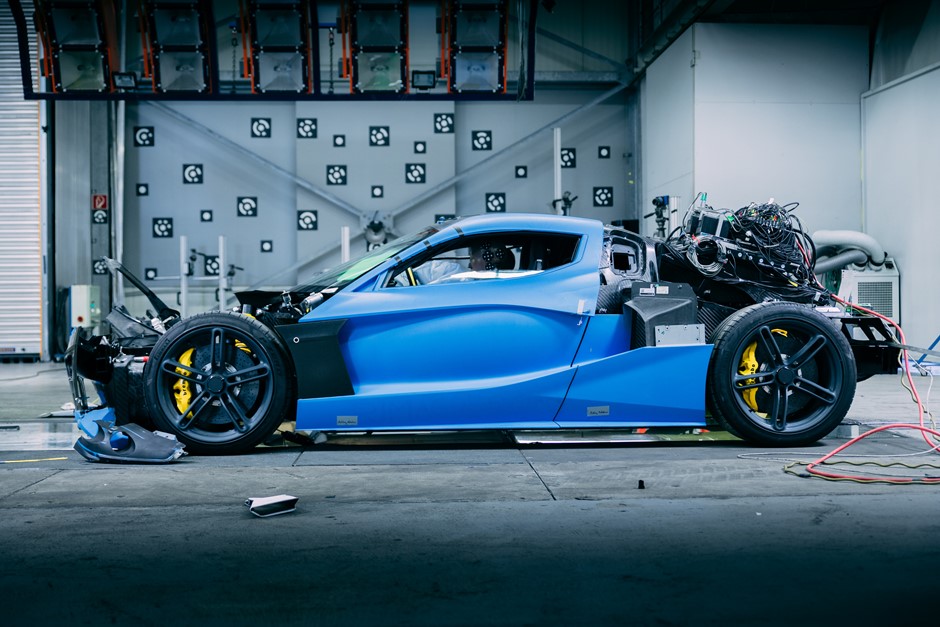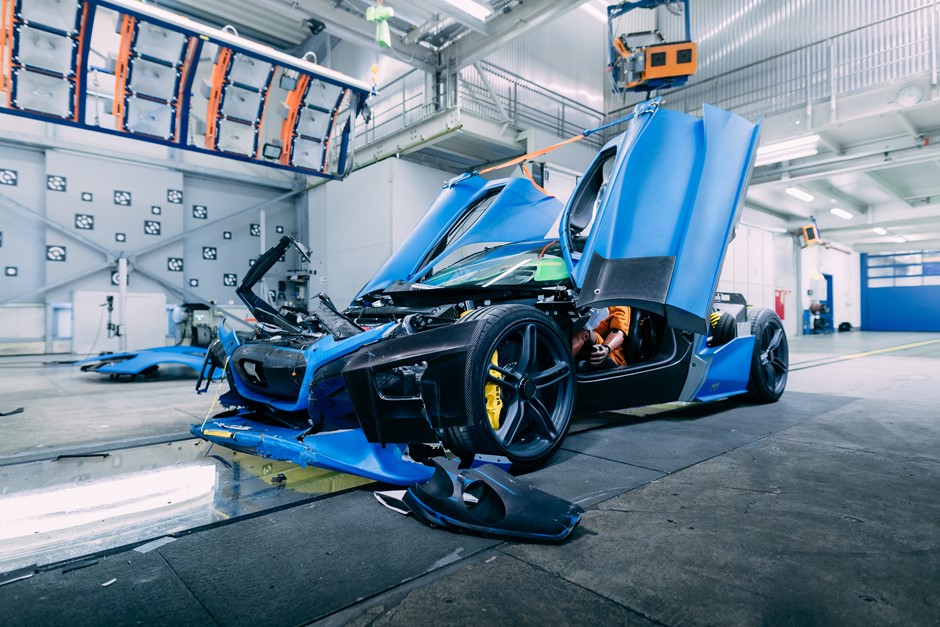

We may earn revenue from the products available on this page and participate in affiliate programs. Learn more ›
Want to see a Rimac C_Two hypercar prototype get wrecked? The electric carmaker just released a video to update the world on its progress as it researches and develops the crash-worthiness of its upcoming model.
Rimac Automobili wants to make sure the C_Two, short for Concept Two, makes an even bigger statement than its predecessor, the Concept One. One of the ways to guarantee that happens is to make sure the C_Two meets crash safety standards all around the globe. The only way to do that is to crash a few to see how it performs.
The company isn’t just crashing prototypes, however, because it’s also doing virtual crash tests via a massive supercomputer to digitally test the car and its components as realistically as possible. Obviously, such a task requires a massive amount of computing power since each of the prototypes they crash are valued at around one million euros each.

It all starts with individual components, such as the front structure frame, the vehicle’s monocoque and passenger cell, the doors for side-impacts and more. Once the components pass the digital tests, they’re then manufactured and crash-tested individually before going on the prototype. This is where the process gets incredibly expensive and tedious as engineers must retest components often since things don’t always go over smoothly.
Once the components are perfected, they then make their way onto the full prototypes, which meet their demise in full vehicle crash testing.

What’s more incredible about the Rimac’s testing of the C_Two is that the engineers reused the same monocoque and passenger cell structure a grand total of six times—five for front, rear and side collisions, and one for a roof crash test—because it was so strong and so resilient.
The team’s attention to detail in this department is likely one of the main reasons why Richard Hammond survived a crash in a Concept One a couple of years ago.

